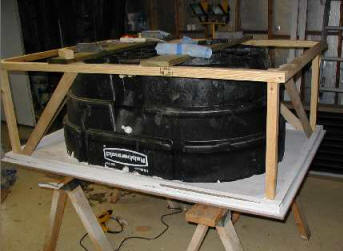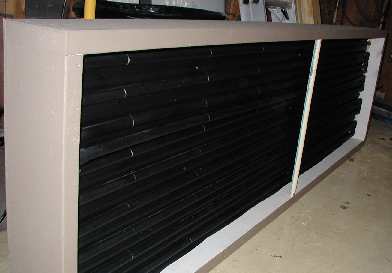
Search
The Renewable Energy site for Do-It-Yourselfers
Home Made Solar
Heated Hot Tub for $350 (including the tub!)
| This is a home made solar heated hot
tub design submitted by Brian. Thank You Brian!
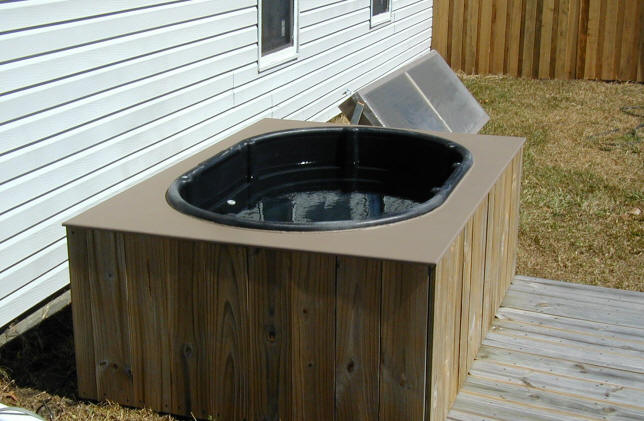 |
|
Brian's Description:
Here's some info on my project. I
didn't take many pictures, but the construction is pretty basic.
I framed the collector box with 2"x6" lumber and 1/4" plywood, the size is about
26" x 8'. The collector is a sheet of corrugated tin and 3/4" CPVC pipe. The
pipe lays down in the bottom of the corrugations. I glued up all the pipe then
applied a bead of flashing cement into each valley, then replaced the pipe
assembly onto the tin and cinched it down into the valleys with some wire. I
painted it all flat black, but it might be better to leave the tin shiny so the
"hills" could act as reflectors??? The glazing is just 4 mil plastic sheet, and
there is a 1/2" thick sheet of the foil covered polyisocyanurate insulating foam
board beneath the tin. The left over piece can be used as a reflector. I later
realized that I could have doubled the amount of piping in the collector if I
would have ran it on both sides of the tin. The back side wouldn't receive
sunlight, but temps still reach 130-150 between the tin and insulation while
running.
The pump came from Lowes and is the Garden Treasures MD170 fountain pump. Its
Magnetic drive and rated at 150 GPH at 1' lift. While testing the collector it
spent several hours a day, for many days, immersed in 150-160 degree water. The
collector can easily and consistently heat a uninsulated bucket of water to 150
and a slightly insulated one to 160 degrees. I then used an old 35 gal plastic
trash can as a tank but the side split open at 120 degrees. I was able to note
a significant drop in heating, down to about 12 degrees per hour. So far with
the 150 gal tank it is about 3.5 degrees per hour, 4.5 with an improvised
reflector and occasionally moving collector to track the sun. The pump was
meant to run submerged, so I had to modify it to run inline. I epoxied on a
short piece of 1/2" CPVC pipe for an inlet tube.
We are real happy with our choice of the 150 gallon Rubbermaid stock tank for
our tub. Just the right size for us, (yes we did go to Tractor Supply and sit
in a few) also it seems to be a good fit with the collector. The dimensions
(being less than 48" wide) also make it easier and cheaper to build the
enclosure. The tank has a 1 1/4" threaded drain near the bottom, I used CPVC
fittings to add a tee and a valve. I draw the water from the bottom of tank and
pump it though the collector and back to a thru hull fitting higher up in the
side of tank. The framing for the tank is also pretty simple. I did cover the
plywood top with some epoxy and glass cloth left over from other projects. The
skirting is from an old fence I replaced.
I am using 3 sheets of the 3/4" blue Styrofoam for the tank cover. The left
over pieces were used to build forms around the tank and I then poured in a 2
part urethane foam for insulation. Did this from the bottom. I used 2
gallons. Would have been a lot easier to have it sprayed on... also will add a
forth sheet of insulation to the top.
I did spend about $400 on this project, but did already have some of the
materials. The costs of some of the items:
Tank $120
Pump 30
Urethane ins 90 (with shipping)
sheet insulation 50
CPVC 75
I had most of the wood already, used sections of a old water hose between tank
and collector, with pool noodles for insulation.
I'm sure I left out some details, so feel free to ask questions. I live in SE
Georgia...
Brian
And, the this note on performance
from Brian:
Was in the hot tub last night at
110 deg, still 106 tonight without running it today. It was about 80 degrees
outside today with overnight lows in the 50's. It does take 2 days to get the
water up to temp if drained and refilled, hope to do it in one day when I get
the batch water set up.
Full Size Pictures:
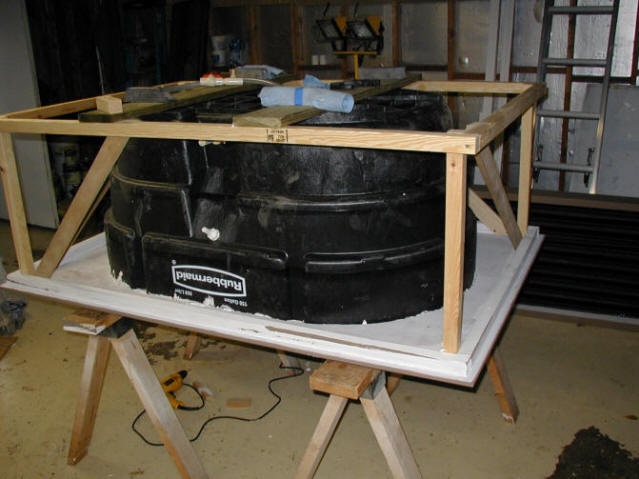
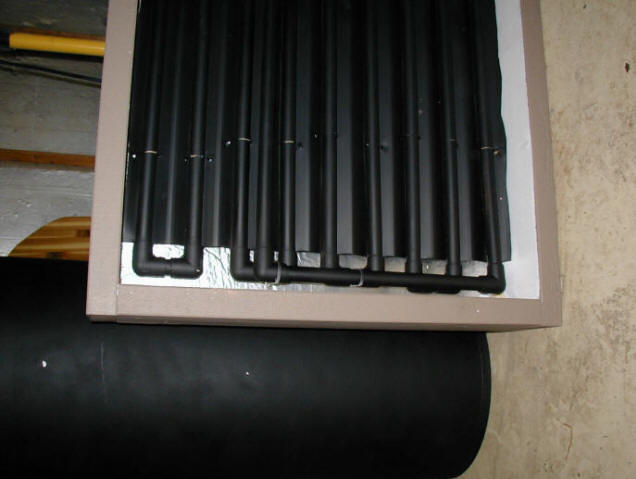
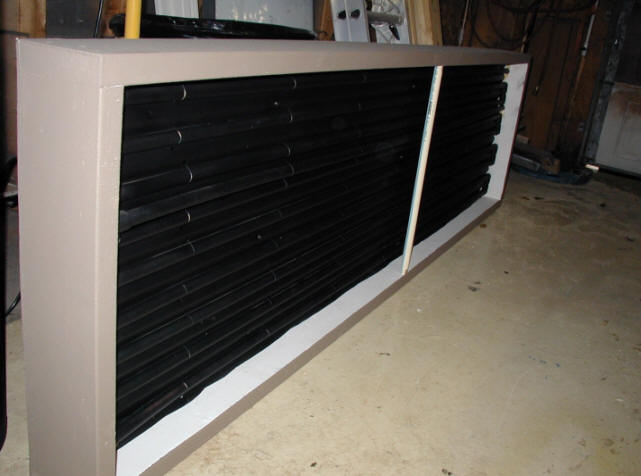
A couple small comments:
Brian lives in SE Georgia -- a fairly
warm and sunny climate (I think). So, if you live in a colder climate, you
will probably need more collector area. But, the collector does not
cost much per square foot, so just build it larger.
The question on whether to leave the
corrugated metal bright to reflect well, or paint it black is a good one.
My guess would be that painting it black is probably best.
It would be best to use polycarbonate
glazing rather than other plastics, as it will hold up well to the high
temperatures.
Note the good insulation levels that
Brian used -- I think this is a big key to success in heating hot tubs.
The collector design is a bit
unconventional, but seems to be working well. It will be interesting
to see what the life of the CPVC piping is -- I think it may do well.
Here is a little more on a CPVC
collector that I did a while back as an
experiment. It is really nice stuff to work with -- cuts and glues
quite easily.
If the collector could be placed
below the tub, then thermosyphon circulation might be used to eliminate the
pump. If this were done, it would be better to have a header style
collector rather than the serpentine style.
Some Further Updates --
Feb 2012:
- There has been some feedback from people building
similar systems that the collector size is marginal even for warm sunny
climates. I think it would be a good idea to up the collector area -- it
does not take much extra effort to build the collector larger.
- I would also seriously consider a
collector construction similar to the
one Tom used with grooved alum fins that fit over PEX tubing. I
believe that this is a more efficient design because of the better heat transfer
between the metal fins and the tubing/water.
Gary 3/12/07, Feb 11, 2012


